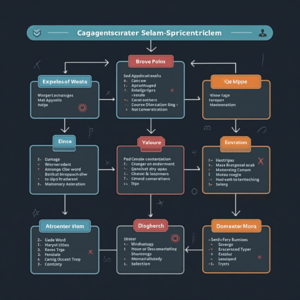
Introduction to Building Custom Modules in CodeIgniter
CodeIgniter is a powerful PHP framework that allows developers to build robust and scalable web applications. One of its key features is the ability to create custom modules, which enables developers to organize their code in a modular and reusable manner. In this article, we will discuss the best practices for building custom modules in CodeIgniter.Custom modules in CodeIgniter are essentially a way to group related functionality together, making it easier to manage and maintain large applications. By creating separate modules for different features of your application, you can keep your code organized and make it easier to update or modify individual components without affecting the rest of the application.
Benefits of Building Custom Modules in CodeIgniter
Building custom modules in CodeIgniter offers several benefits, including improved code organization, reusability, and maintainability. By breaking down your application into smaller, independent modules, you can:Reduce code duplication: Custom modules allow you to reuse code across different parts of your application, reducing code duplication and making it easier to maintain.Improve code readability: With custom modules, you can group related functionality together, making it easier to understand and navigate your codebase.Enhance scalability: Custom modules make it easier to add new features or functionality to your application without disrupting the existing codebase.

Best Practices for Building Custom Modules in CodeIgniter
To get the most out of custom modules in CodeIgniter, follow these best practices:Keep it simple: Keep your modules simple and focused on a specific functionality. Avoid creating large, complex modules that are difficult to maintain.Use meaningful names: Use meaningful and descriptive names for your modules, controllers, and models. This will make it easier to understand the purpose of each module and its components.Follow the MVC pattern: CodeIgniter follows the Model-View-Controller (MVC) pattern. Make sure to follow this pattern when building your custom modules to ensure consistency and maintainability.
Creating a Custom Module in CodeIgniter
To create a custom module in CodeIgniter, follow these steps:Create a new folder: Create a new folder in the application/modules directory to hold your custom module.Create a controller: Create a new controller file in the controllers folder of your module. This will serve as the entry point for your module.Create a model: Create a new model file in the models folder of your module. This will handle data access and manipulation for your module.Create a view: Create a new view file in the views folder of your module. This will display the user interface for your module.
Example of a Custom Module in CodeIgniter
Let’s say we want to create a custom module for a blog. We can create a new folder called blog in the application/modules directory.Inside the blog folder, we can create a new controller file called Blog.php. This controller will handle requests for the blog module.We can also create a new model file called Blog_model.php to handle data access and manipulation for the blog module.Finally, we can create a new view file called blog.php to display the blog posts.
Conclusion
Building custom modules in CodeIgniter is a powerful way to organize and reuse code in your web applications. By following the best practices outlined in this article, you can create robust and scalable custom modules that make your code more maintainable and efficient.Remember to keep your modules simple, use meaningful names, and follow the MVC pattern. With these guidelines, you can create custom modules that are easy to understand and maintain, and that will help you build better web applications with CodeIgniter.

